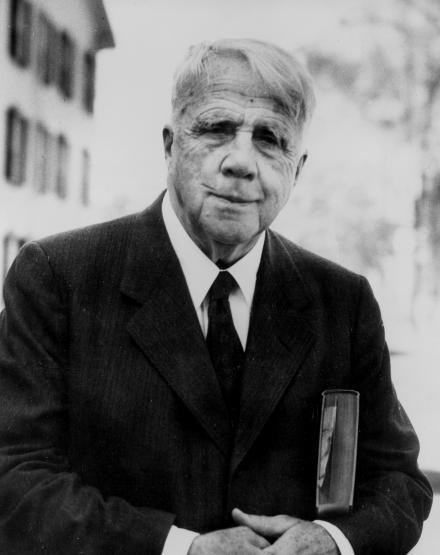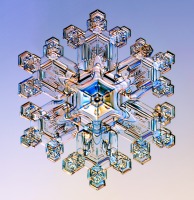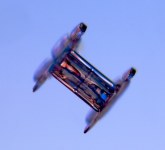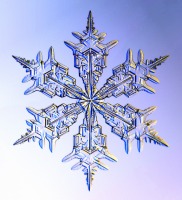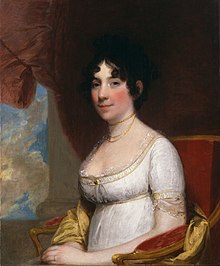Yesterday brought temperatures in the low 70s,
and the change in humidity made the sidewalks and pavement weep moisture
until it looked like they had all been rained on.
And the wind ... the wind blew furiously from late morning deep into the night.
And then the real rain started.
So I had checked the weather online earlier in the evening,
So I had checked the weather online earlier in the evening,
then googled the word "wind" to see what I might find.
I wasn't looking for much more than the speed of the gusts
or how long the wind was projected to last.
Instead, in one of those inextricable instances of serendipity,
"wind" was mentioned in reference to a codex (ancient book)
that I had never heard of before: Tacuinum Sanitatis.
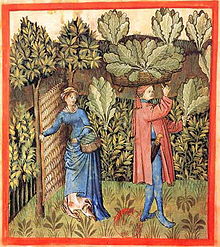
cabbage harvest image from Tacuinum Sanitatus, wikimedia.org
According to Wikipedia.org, this collection was originally written in Arabic
by Ibn Butlan in Baghdad in 1098
under the title of Taqwim al-sihha, تقويم الصحة
meaning "maintenance of health."
meaning "maintenance of health."
It was later translated into Latin in the 13th century.
Its 14th- and 15th-century manuscripts form a medieval "how-to"
for preserving health and well-being.
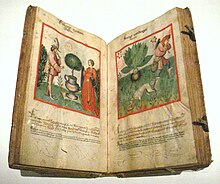
photo from wikipedia.org

photo from wikipedia.org
The Tacuinum focuses on six habits: moderation in food and drink,
fresh air, alternating rest with movement,
alternating sleep with wakefulness,
balance of emotions, and balance of the four "humours": hot, dry, cold, moist.
Illnesses are said to occur when any of these six are out of balance.
The volumes in the collection are part herbal, part cookbook,
and part advice column.
One bit of advice cited by www.moleiro.com,
a bookseller of reproductions of ancient manuscripts:
elderly people should eat large raisins in the winter
because they alleviate intestinal pains and strengthen the liver and stomach.
I don't know if that works,
but I don't suppose it would hurt--in moderation, of course.
One bit of advice cited by www.moleiro.com,
a bookseller of reproductions of ancient manuscripts:
elderly people should eat large raisins in the winter
because they alleviate intestinal pains and strengthen the liver and stomach.
I don't know if that works,
but I don't suppose it would hurt--in moderation, of course.
Tomorrow, more wisdom from the Tacuinum Sanitatis.
<>
